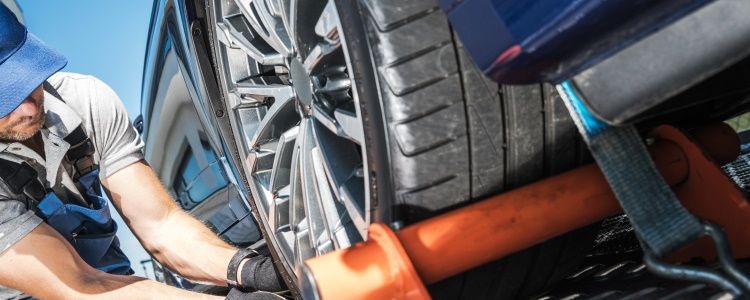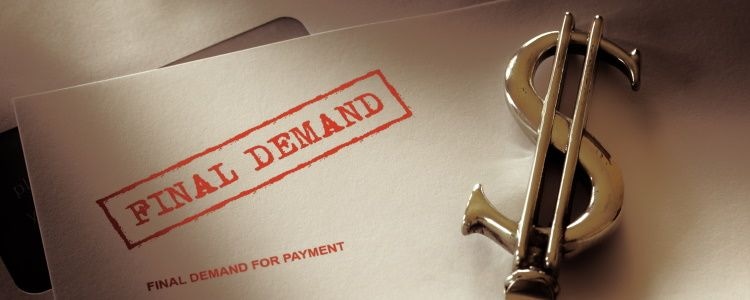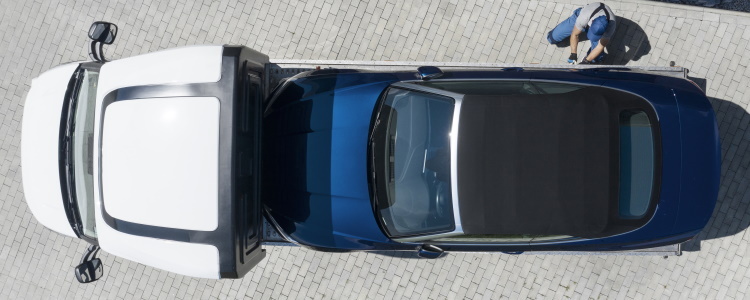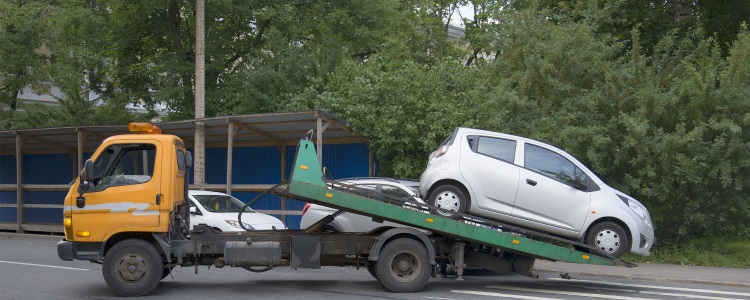Financing a vehicle means the lender that helped you buy the car has some rights to it until you complete the loan. Here’s why a lender can take your car, the most common reasons for repossession, and how you can protect yourself from a repo.
Why Lenders Can Repo Cars
If you don’t buy a car with cash and you’re not leasing, odds are, you’re financing that vehicle and paying on a loan. The lender gives you the money to pay the dealership for the car, and then you pay them back in installments over a set loan term (usually between 48 to 96 months).
The car is collateral on an auto loan. Collateral is something pledged as security for the repayment of a loan, and the collateral is returned to the lender if the borrower defaults or breaks the contract. This means that if you stop paying or break the loan contract, the lender is well within their rights to repossess the vehicle.
The two most common reasons for repossession are:
- Missed or late payments that lead to default
- Lapsing on full coverage auto insurance
Besides keeping up with the loan payments, auto lenders require that borrowers maintain full coverage car insurance during the loan term. They require the vehicle to be covered to the fullest extent because it’s still technically their property until you repay the loan. If the auto insurance coverage lapses, they’re notified of the change by your insurance company and can repo the car if it’s not reinstated, or instate force-placed coverage.
The lender is also listed on the vehicle’s title as a lienholder until you pay off the loan, which serves as proof that you have a loan on the car and stops you from selling the vehicle without paying off the lender first.
When Does Repossession Start?
The repossession process can start as soon as you're late on one payment – which could mean one day late in some cases, depending on the loan contract you agreed to. Some lenders even put a device on the vehicle that disables the car until you resolve the problem.
In most cases, however, once a payment is 30 days overdue, it officially becomes a “missed” payment instead of just a late payment. After that, the lender contacts you to let you know you’ve missed a payment, and go over options for resolving the missed payment, and if they’re starting the repo process.
Typically, you have the option to make up the missed payment and get back on track with the auto loan. If you’re unable to do this, it’s likely that the lender will be moving forward with the repossession.
Most states don’t require a lender to inform you of when or where your car is going to be repossessed. The lender can hire a recovery company to tow away the vehicle anytime – if it’s out in the open, it can be hooked up and towed away. Whether you’re at work, at a store, or it’s parked in your driveway, the car is fair game for a repo.
One of the only places a recovery company can’t take your vehicle is when it’s parked inside of a locked garage (since breaking the lock would constitute breaking the peace). But if you just lock your vehicle away and the repo company can’t get to it, the lender can escalate the matter and get a court order to recover the car.
Stopping a Repossession
One of the best ways to stop repossession is by staying current on your loan contract. If you hit a snag and start worrying that you’re going to miss a payment, then contact your lender right away. Some lenders are able to help borrowers that are struggling financially.
In some cases, a lender may move your payment due date to adjust to your schedule, or simply give you some time to catch up. In more extreme cases, such as a job loss or medical emergency, you may qualify for a deferment. A deferment plan is when payments are paused (usually for up to three months) to give you some time to realign yourself. Once the deferment is over, you start paying again like normal. Any payments that were skipped during the deferment period are usually added to the backend of your loan term to be repaid later.
If you’ve already missed a payment, you may not qualify for a deferment. However, many auto lenders allow borrowers the “opportunity to cure,” which typically involves you making up all missed/late payments to get back on track.
Believe it or not, lenders prefer to avoid repossession. A repossession is time-consuming for the lender and can be costly, too. A repossession means inconvenience for both you and the lender. If you get the feeling you’re about to miss a payment or be a few days late, it’s worth it to contact your lender and keep them in the loop. The more communication you have with them, the better your relationship may be and the more willing they may be to help you if something goes awry.
Auto Loan Options After a Repo
If you have gone through a repossession, it’s not the end of the road when it comes to your credit. A repo can negatively affect your credit score for up to seven years, but after that, it falls off your credit reports.
And, if you need another car loan after a repo, Auto Credit Express wants to help. We’ve created a network of dealerships that are equipped to work with borrowers in all sorts of unique credit situations. To get matched to a dealer in your local area, complete our free auto loan request form.
















